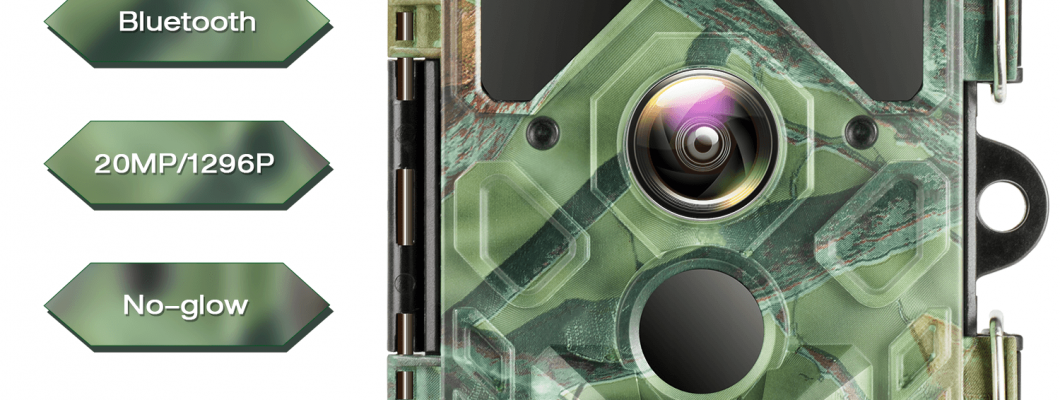
A wireless trail camera is simply a game camera that sends pictures to your phone in one of two ways. They may utilize Wi-Fi, which is the same technology that allows you to surf the internet without plugging in an ethernet cable. Other types of wireless game cams use the same cellular networks that help our cell phones function.
Wireless game cameras can be convenient tools for monitoring the comings and goings on your property, but they are not without their issues. Ultimately, the type that will work best for you will depend as much or more on how you intend to use your camera as on your budget. The cheapest wireless camera available may outperform the most expensive one if it is better suited for the purposes of its user.
Unlimited Range

Because they utilize the same network of cellular towers that enable cell phones to work, cellular trail cameras can send photos over vast distances. It does not matter how inaccessible the camera is; if cellular service is available in its location, it can transmit images. This ability has potential benefits for both hunters and home owners, neither of whom normally place their expensive game cameras in easily accessible locations.
A game cam that sends pictures to your phone should instantly appeal to deer hunters. Whether you lease or own your hunting property, image retrieval can be a real hinderance. Using a cell trail camera eliminates the need to travel. As long as there is cell service in the camera’s location, you can receive your photos across any amount of distance.
The unlimited range of cellular camera traps can also appeal to homeowners who use their cameras for security and surveillance. It is always a wise decision to place your wireless trail cam in a location that makes it difficult to see, and therefore steal. Unfortunately for the user, this also makes the SD card difficult to retrieve. A cellular trail camera lets you view your images from anywhere, even if you are away on vacation or monitoring your vacation home.
Instant Notification

One of the most attractive functions of a cellular trail camera for many users is its ability to instantly email a photo to its owner. So not only do you not have to travel to access your photos, but you do not have to wait to review them either. Property owners become instantly aware of anything that is occurring on their property. This function has obvious benefits for deer hunters, but it can be useful to homeowners as well.
The issue of traveling out to the wilderness to monitor game movement keeps most hunters from checking their cameras regularly. The more distant the camera is or the more difficult the terrain, the less often it can feasibly be accessed. By the time a hunter returns to examine the photos a wireless deer camera captures, the trails may have gone cold. Deer can and will alter their routes from bedding to foraging for any number of reasons, but a cellular deer camera makes it possible to track their movements in real time.
The instant notification that cellular camera traps makes possible is a huge benefit for the homeowner. If you can only access your camera occasionally, any trespassers it records may be long gone by the time you see the photos. A cellular camera trap can send pictures to your phone instantly, giving you the ability to notify the authorities while the offender is still on the property.
Service Charges

Of course, no technology is without its faults. One of the main detractions of cellular game cameras is the fact that they require cell service to function. Typically, that service costs approximately the same amount that you would pay to add a line to your current phone service. As opposed to game cameras without wireless functionality, wireless trail cams are open-ended commitments. A monthly service charge is an inevitable expense, though the data-only plans that they require are usually much cheaper than unlimited-data cell phone plans.
Service Areas
If you’ve tried to use your cell phone and discovered that you were in an area with poor service, you understand the limitations of cellular technology. Lack of service isn’t quite the problem it was years ago, and it is improving all the time. Still, some areas do not quite have the cellular signal that others do, which can be a bigger problem for hunters than for homeowners. Before purchasing their cameras, many cellular game camera manufacturers suggest checking for service first. Your location may require at least three bars to send pictures wirelessly.
3G vs. 4G
There are essentially two options when purchasing a cellular game camera: 3G or4G. The “G” in this case stands for generation, so a “3G” cellular device is third generation and “4G” is fourth generation. Both types use the same cellular networks, but a 4G device is up to 10 times faster than a third-generation one.
Other than the previously mentioned concerns, cellular trail cams tend to work flawlessly. However, there is an impending issue that potential buyers should consider. Fifth-generation cellular devices are already coming to market, and it likely won’t be long before they take over the industry. Even when that occurs, a 3G and 4G trail camera will continue to function. Estimates suggest that a 5G device will be around 10 times faster than 4G in real-world applications, meaning they should work instantaneously.
Wi-Fi Trail Camera

A Wi-Fi game camera is a completely different concept than a cellular trail cam. These cameras use the same Wi-Fi signal as a computer or cell phone uses to transmit data via radio signal on a wireless local area network. If you have used Wi-Fi in the past, you will understand that it works differently than cellular technology.
Devices that use Wi-Fi may operate on one of several different wavelengths, which can affect their usability in certain situations. Just like cellular game cameras, Wi-Fi trail cameras have their pros and cons.
No Service Charges
One of the biggest advantages a Wi-Fi game camera has over a cellular one is that it has no service charge. Their networks are local and password-protected, meaning the functionality is reserved for the owners alone. The only investment they require is the original purchase cost, whereas a cellular game camera comes with a monthly service charge. These charges are comparable to the cost of keeping an extra cell phone, complete with unlimited data.
Limited Range
A Wi-Fi trail cam is inexpensive to operate, but that affordability comes at the cost of convenience. Compared with a cellular game cam signal, game camera Wi-Fi has extremely limited range. Even the best Wi-Fi trail camera will have a range of only perhaps 20 meters(or 66 feet). This limitation prevents these cameras from being able to transmit data directly to a cell phone or computer from the types of vast distances at which cellular game cameras operate.
Their 20-meter range is also only true for line-of-sight applications. Walls or trees will further reduce the range. But a Wi-Fi camera can still transmit images to you remotely if you install it within range of a network. In that case it can send data straight to your email address.
Lower Battery Life

Speaking in the most general of terms, the batteries of a Wi-Fi trail camera will likely have a shorter lifespan than any other type of game camera. The reason for their short battery life is that these cameras maintain a constant connection to the local network. The resulting draw drains batteries twice as fast as comparable non-wireless game cameras, or even faster. Even the best cellular trail camera will get similarly low battery life under constant use, but they tend to outlast Wi-Fi cameras under normal circumstances.
Which Is Best?
Having a trail camera that sends pictures to your phone is a great solution for many people, but one of the two types will inevitably be more suitable for a particular user than the other. In general, cellular game cams work best for hunters and those that use Wi-Fi are best for home-surveillance applications. Let’s examine the reasons why.
Who Needs Wi-Fi Trail Cameras?
The reason that a Wi-Fi camera is the best option for a homeowner has everything to do with its limited range. Most of the time, users of these Wi-Fi cameras place them in high, inaccessible locations, such as under the eaves of a structure. Swapping SD cards at these heights normally requires a ladder, but not with Wi-Fi functionality. Even on multiple-story buildings, Wi-Fi signals are usually strong enough to connect between a roof and a ground-level router or cell phone.
Of course, a cellular camera can also fill this role. Cell cameras also offer the flexibility of sending photos to your phone while you are away, and anyone who travels often may consider their unlimited range a benefit. But cellular service charges add up quickly, and anyone who does not need their functionality should ask themselves whether or not the added costs are necessary for their purposes.
Who Needs Cellular Game Cameras?
Simply put, cellular game cameras are the best option for those who need to access their photos remotely. The 20-meter limit on Wi-Fi connectivity is useless for most hunters and for those homeowners who want to protect their property while they are away. When distance is a factor, the best wireless game camera is undoubtedly a cellular game camera.
Conclusion
As is likely obvious by our selected cameras, the game cam wireless market is dominated by cellular technology. Wi-Fi outdoor cameras simply do not offer the same range of cell cameras. Their lack of operating costs— save for batteries—was once their chief advantage, but data-only cellular plans are getting cheaper by the year.
Finding a game cam that sends pictures to your phone is now simply a matter of reconciling your budget with your image quality desires. As the technology improves, these cameras will inevitably incorporate better and better sensors and offer faster triggers and shorter recovery times. Image quality, too, is likely to improve over time, even as prices continue to drop. The future is bright, and it is most definitely cellular.
